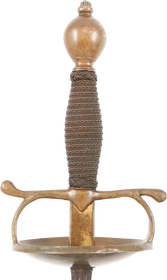For Sale
The following items are listed by for sale by users of the site and dealers. They are in no way endorsed or guaranteed by www.antiquearmsresearch.com
Add a Classified ItemYou can also receive regular email notifcations when items match your keywords. To recieve them just register or logon at the top right of this page.
- Nation : Spanish
- Local Price : 1,950.00 USD
- Nation : British
- Local Price : £1,400.00
- Nation : British
- Local Price : £1,400.00
- Nation : Spanish
- Local Price : £1395
- Nation : Japanese
- Local Price : £1,395.00
- Nation : Japanese
- Local Price : £1,375.00
- Nation : British
- Local Price : £1375






.jpg)

.jpg)
